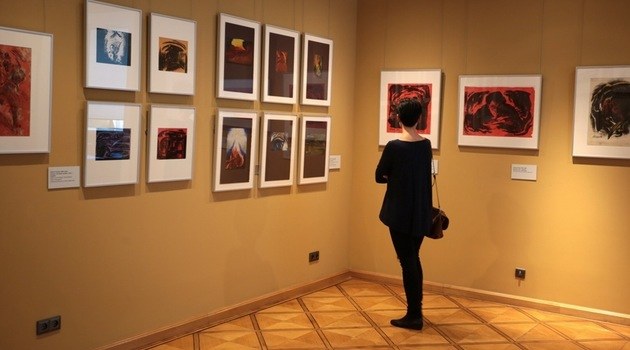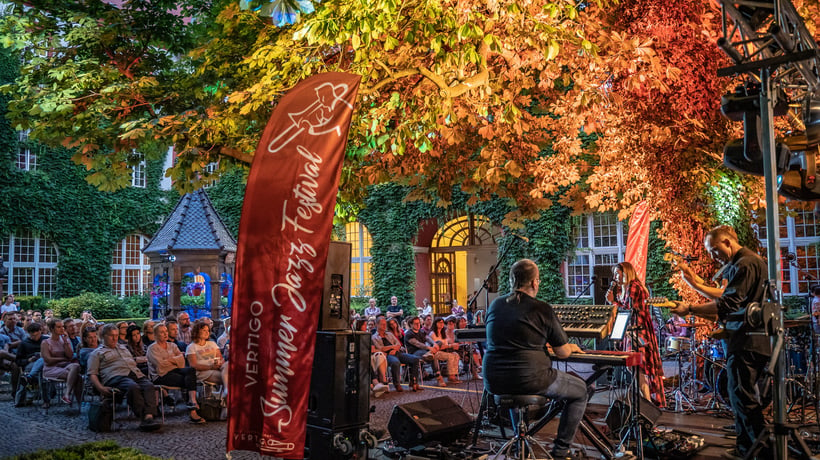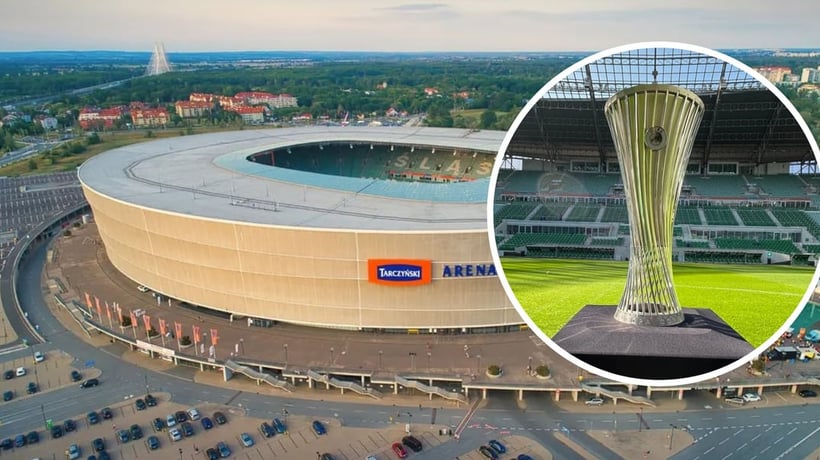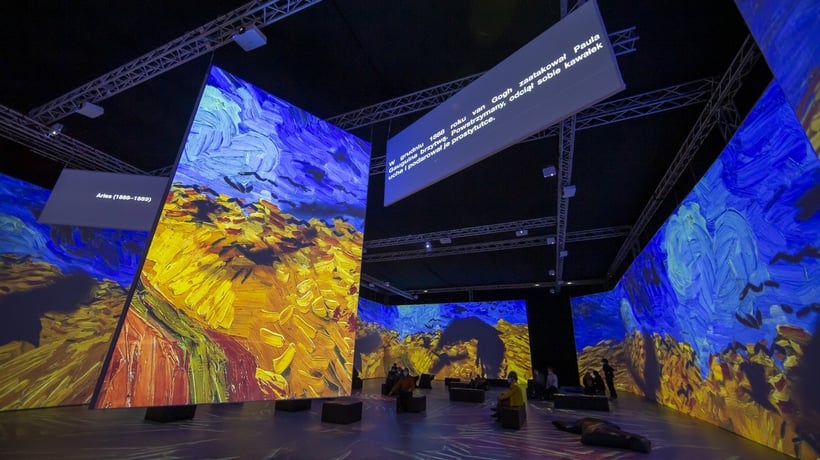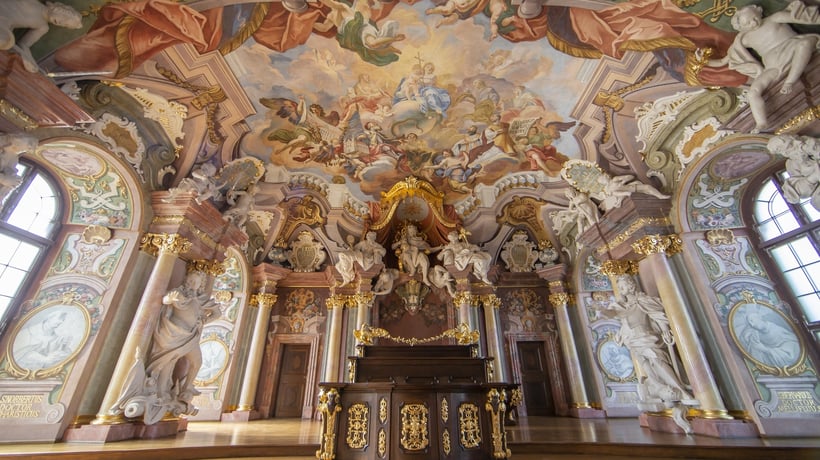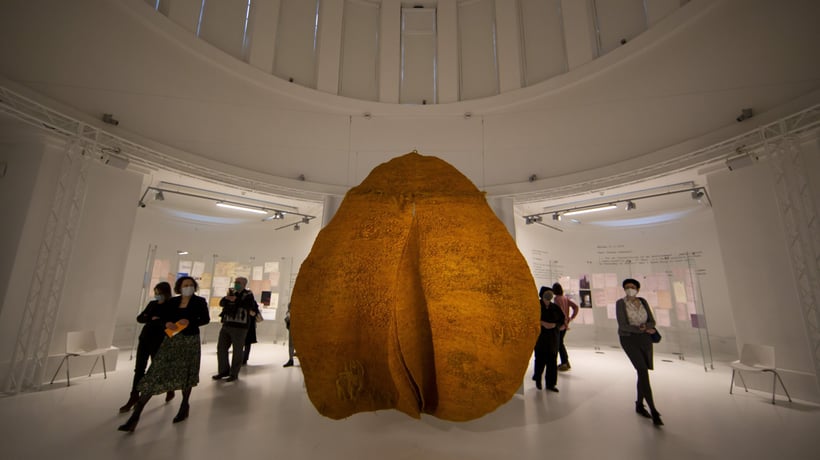‘Few of the works by Jewish artists created during the difficult years at the beginning of the last century have survived,’ says Maciej Łagiewski, Ph.D., the director of the City Museum of Wroclaw. ‘One of them, Heinrich Tischler, lived and worked here in Wroclaw. He was a painter, architect, designer and graphic artist – it’s difficult to say whom he actually considered himself to be, because each of his annual entries in the address book contains a different description.’
The exhibition ‘Persecuted Art. Heinrich Tischler and His Wroclaw Environment’ is the first presentation of works by Jewish artists from the interwar Wroclaw in Poland. The presented works are a part of the collection of the Silesian Museum in Gorlitz. Apart from Tischler’s works, we can also see works by artists such as Isidor Aschheim, Käte Ephraim-Marcus, Emmi Pick or Jechiel Schulsinger.
‘Heinrich Tischler was an exceptional person,’ stresses Łagiewski. ‘He studied at the Academy of Fine Arts in Wroclaw, but his education was interrupted by the first World War. The reflections and traumas connected with that experience are present in his works,' he adds. ‘After the war, he became very active as a graphic artist, architect and painter. He died in 1938 as a result of an infection following his one month’s stay in the concentration camp in Buchenwald. Tischler’s wife Else saved his works by escaping to London together with their sons. As a result of this, a large part of Tischler’s artistic output has survived, unlike in the case of other Jewish artists.’
The 1930s were a period of growing persecution of Jewish artists in Germany. They were excluded from the Reich Chamber of Culture (Reichskulturkammer), and their works were called 'degenerate', removed from public museums and destroyed in workshops. Most of the works are still regarded as lost, and little is still known about the life and activity of many artists.
’Johanna Brade, the author of this exhibition, spent many years working on a catalogue that became a monograph on the subject of Jewish artists and restored the memory of them,’ says Łagiewski.
Tischler and others
The exhibition will present works, litographic prints, drawings and gouache paintings by Tischler. The artist was born in Kędzierzyn-Koźle in 1892. In 1910, he began studies at the Royal School of Art and Artistic Craft in Wroclaw. During World War I, he served as a soldier. He won recognition as an artist already in the 1920s, when his works were presented, among others, at exhibitions of the Berlin Secession. In 1925, he opened a painting school together with Isidor Aschheim in Wroclaw, and a year later he started intense architectural activity.
He designed, among others, the interiors of the Petersdorff (today Kameleon) department store in Wroclaw, as well as many shop windows and private house interiors. We can see wonderful modernist interiors designed by him on the photos displayed on the screen. They are one of the most interesting parts of this exhibition.
From 1930, Tischler was a member of the German Association of Craftsmen (Deutscher Werkbund), which has a significant impact on the development of the idea of modernistic architecture. In 1931, he presented his works at a private exhibition in Wroclaw for the last time. Soon afterwards, he was deleted from the list of members of the Reich Chamber of Fine Arts.
In 1936, he completed his last commissioned design while working as a drawing teacher. On 11th November 1938, shortly after the Night of Broken Glass (Kristallnacht), he was arrested and deported to the Buchenwald concentration camp. As a result of his family’s efforts, he was released a month later, but, due to physical exhaustion and injuries sustained during his stay in the camp, he died in Wroclaw on 16th December 1938. He was buried at the New Jewish Cemetery at ul. Lotnicza.
Portrait of Wroclaw
As in the case of his entire generation, Heinrich Tischler’s works reflect the traumatic experience of World War I. The artists showed explicit expressionistic tendencies, not avoiding modern trends in art as well. Their works bear the clear influence of modern French painting and the New Objectivity (Neue Sachlichkeit) trend. They painted landscape portraits, nudes, street scenes, self-portraits and portraits of close relatives.
Tischler sketched also faces and genre scenes. He was particularly interested in the everyday street life of Wroclaw. On his pictures, we can see carters, maid-servants, craftsmen, workers, door-to-door salesmen and immigrants from Eastern Europe. In this way, the artist created a mysterious and characteristic portrait of Wroclaw – a place where worlds of the West and the East crossed.
Over the years, both his works and works by other artists reflected increasingly often the problems of artists of Jewish descent, who became victims of political and artistic dictatorship in the interwar period. The expressive and dramatic drawings and paintings reflect their internal fear and uncertainty of the future. In order to express his disapproval of the policy of the Third Reich, the artist signed his works with initials resembling the letters of Jewish alphabet, thus emphasising his Jewish descent and unity with other persecuted artists.
The exhibition is open from 20th March till 31st July 2016. The full-price ticket costs PLN 15, and the reduced-price ticket costs PLN 10.


